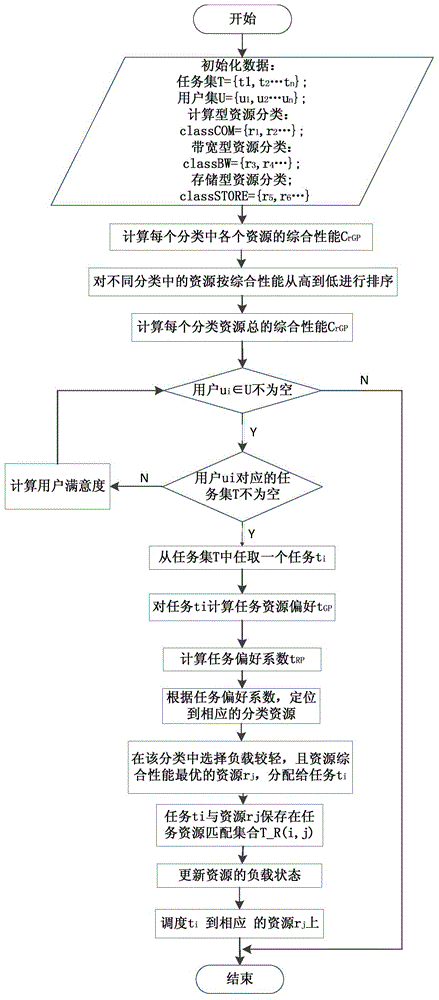Heterogeneous granularity classification-based cloud environment task scheduling method
A non-uniform granularity and task scheduling technology, applied in resource allocation, multi-programming devices, etc., can solve the problems of short tasks with long waiting time and failure to complete within the specified time
- Summary
- Abstract
- Description
- Claims
- Application Information
AI Technical Summary
Problems solved by technology
Method used
Image
Examples
Embodiment 1
[0060] The present invention uses the CloudSim simulation platform to carry out simulation experiment scheduling based on the cloud environment task scheduling method based on non-uniform granularity classification (abbreviation: TSNUGC algorithm) and Min-Min algorithm and Max-Min algorithm, from the average completion time of the scheduling strategy, user satisfaction The performance of the three algorithms is compared in terms of degree, load balance and system throughput.
[0061] The experimental simulation environment of the present invention is composed of two cloud providers and several cloud users, and each user has several tasks to be executed. The simulation system mainly includes user scheduler, task generator, resource generator and task scheduler. The user scheduler can select an appropriate cloud provider according to the user's requirements for resource performance, and realize the binding of the user with a specific cloud provider. The task generator randomly ...
Embodiment 2
[0082] like figure 1 As shown, the present invention provides a cloud environment task scheduling method based on non-uniform granularity classification, the method includes the following steps:
[0083] Step 1: Classify and preprocess the resource vectors in the cloud system, and establish an initial sample matrix of resource vectors;
[0084] Step 2: Perform standard range processing on the sample matrix to ensure that the sample values in the sample matrix are between 0-1;
[0085] Step 3: Using the Euclidean distance between samples as the similarity measure function, perform a clustering operation on the obtained sample matrix to obtain a cluster pedigree graph; gradually reduce the threshold T, cut the cluster pedigree graph, and finally obtain three resource classifications: calculation type resource classification, bandwidth type resource classification, and storage type resource classification;
[0086] Step 4: Sort the resources in different categories according to...
PUM
 Login to View More
Login to View More Abstract
Description
Claims
Application Information
 Login to View More
Login to View More - R&D
- Intellectual Property
- Life Sciences
- Materials
- Tech Scout
- Unparalleled Data Quality
- Higher Quality Content
- 60% Fewer Hallucinations
Browse by: Latest US Patents, China's latest patents, Technical Efficacy Thesaurus, Application Domain, Technology Topic, Popular Technical Reports.
© 2025 PatSnap. All rights reserved.Legal|Privacy policy|Modern Slavery Act Transparency Statement|Sitemap|About US| Contact US: help@patsnap.com



